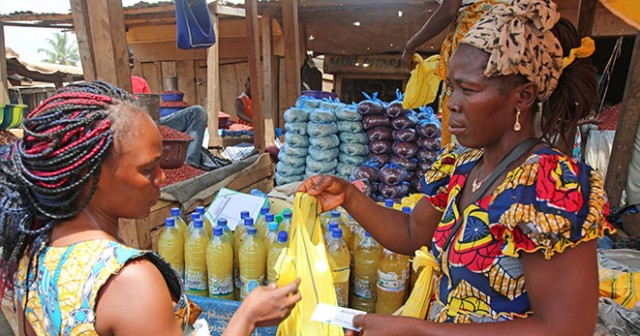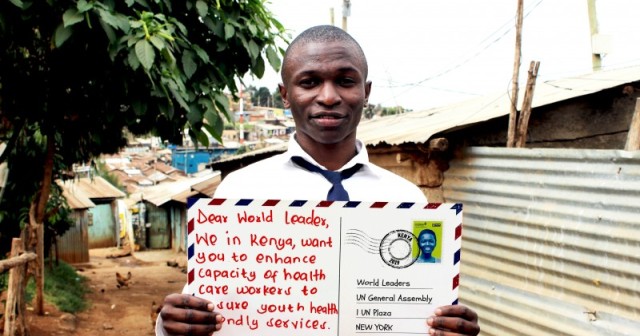Universal Health Coverage: Sexual and Reproductive Health and Rights on the Agenda
Universal Health Coverage: Sexual and Reproductive Health and Rights on the Agenda
Why are sexual and reproductive health and rights (SRHR) critical to the achievement of universal health coverage (UHC)? How can a vision of UHC underpinned by the social determinants of health support the full range of SRHR?
As the UK Coordintor for Action for Global Health (AfGH) I'm pleased to share our new discussion paper, jointly published with Countdown 2030 Europe called “Universal Health Coverage: Sexual and Reproductive Health and Rights on the Agenda”. In this paper we argue for a human rights-grounded approach to UHC, and highlight areas for priority focus and activism to achieve universal access to SRHR.
A new global context
The Sustainable Development Goals (SDGs) represent a key opportunity for advancement towards UHC which fully supports the realisation of SRHR. There is growing consensus on the importance of UHC for progress on many of the SDGs, with the World Health Organisation, 69th World Health Assembly, G7 and G20 endorsing it. UHC is an expression of the right to health, and key to reducing social inequalities and inequities.
There is also recognition that SRHR lie at the core of sustainable development and the right to health, having intimate links with other areas of health, poverty eradication, and as a precondition for gender equality and non-discrimination.
As such, UHC will not be achieved without the full inclusion of SRHR as a central element, and recognition of this will play a strong role in progress for both.
Why SRHR is an integral component of UHC
Critically, this means ensuring SRHR information and services are an integral part of a core package of essential health services, and a comprehensive ‘continuum of care’ which includes maternal, child and adolescent health, available to everyone, throughout the life-cycle.
It is also crucial to address the social determinants of health. This means strong efforts to tackle socio-cultural norms which prevent some people from enjoying their right to health: promoting gender equality to support women’s and girls’ empowerment and challenging harmful and risky behaviours. It means the inclusion of comprehensive sexuality education (CSE) as a key component in the prevention of poor health outcomes.
Reducing stigma and discrimination on the grounds of sex, gender identity or sexual orientation is further necessary to create an enabling environment for specific groups to realise their SRHR. Integration of other health-related areas will also help to achieve UHC. For instance, integration of HIV with SRHR is crucial, as lack of sexual and reproductive health and rights and HIV share root causes.
Critical areas for SRHR within UHC
When defined as an approach which addresses the broader social determinants of health UHC can support critical components of SRHR, and the realisation of SRHR within the health system and beyond. However, there are multiple areas of SRHR needing greater attention to truly achieve UHC.
To meet human rights requirements, health systems, infrastructure and delivery mechanisms must serve the goal of making health services available, accessible, acceptable, and of good quality:
- Availability: The most ‘sensitive issues’, and the issues of marginalised groups, are often the first to be deprioritised in availability. Concerted efforts must be made to tackle this in order to achieve UHC, even in the face of political resistance.
- Accessibility: To achieve universal access to SRHR services and information, it is imperative to specifically include them in UHC programmes and financial protection measures, so the cost of accessing sexual and reproductive healthcare does not become impoverishing.
- Acceptability: The health sector plays a role in providing non-stigmatising services, based on non-discrimination and treating services users with dignity and respect, to challenge harmful socio-cultural norms, including gender norms. Success also requires interventions at the community level for the promotion of gender equality.
- Quality: ‘Good quality’ healthcare should include provision of scientifically and medically accurate information, appropriately skilled medical personnel, scientifically approved and unexpired drugs and hospital equipment, safe drinking water, and adequate sanitation as preconditions to enable all individuals to make full, free and informed choices about their sexual and reproductive health on a voluntary basis without coercion.
An integrated agenda
These areas require continued, sustained advocacy and political and financial investment. UHC which is situated within a broader framework to address the underlying social determinants of health, and which aims to change policies and legislation and remove discriminatory barriers, is necessary to ensure the full enjoyment of SRHR by all.
The recommendations made in this paper are intended to support governments and donors to adopt and put into practice a holistic UHC approach which prioritises SRHR and addresses underlying social determinants of health - to support the full realisation of SRHR and the right to health for all.
Latest stories for you
Cash and voucher assistance: ensuring safety in humanitarian settings
Recommendations from our experience of delivering humanitarian CVA.
Adolescents call for action on health from world leaders
We asked adolescents what they wanted UN delegates to know about the challenges they face in...
Real Choices, Real Lives: the role of conditional cash transfers
We explore the role of CCTs in girls' lives.
World Refugee Day: what education in emergencies means for girls
Education is a lifeline for girls in crises – but millions are being left out and left behind.
Show more



